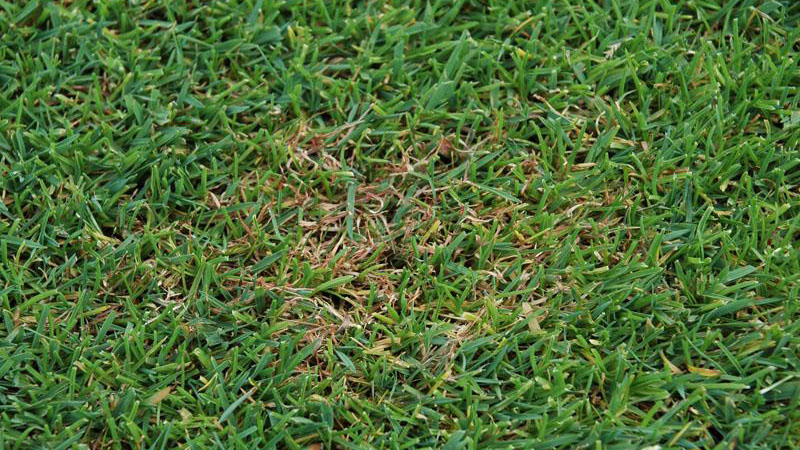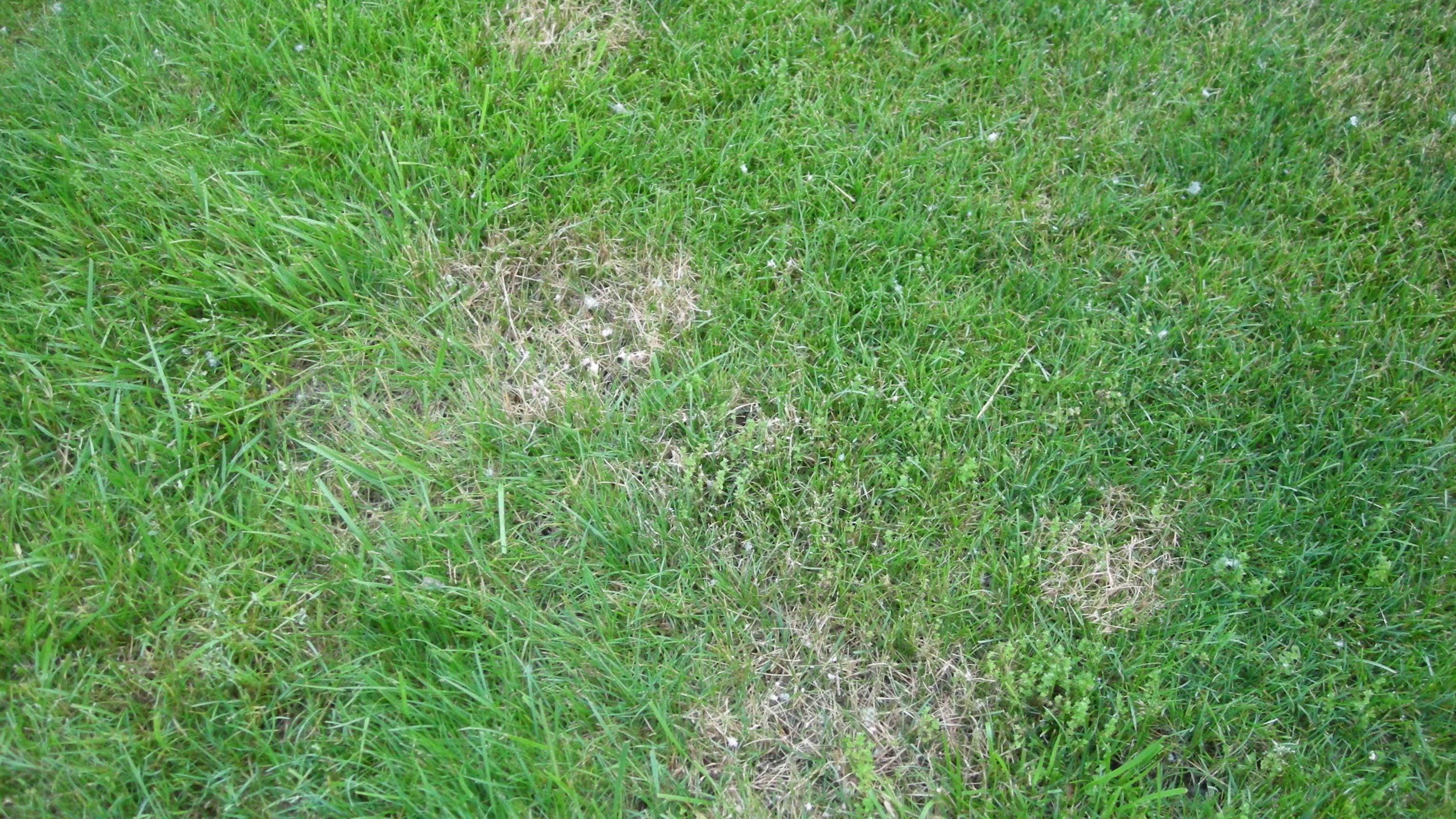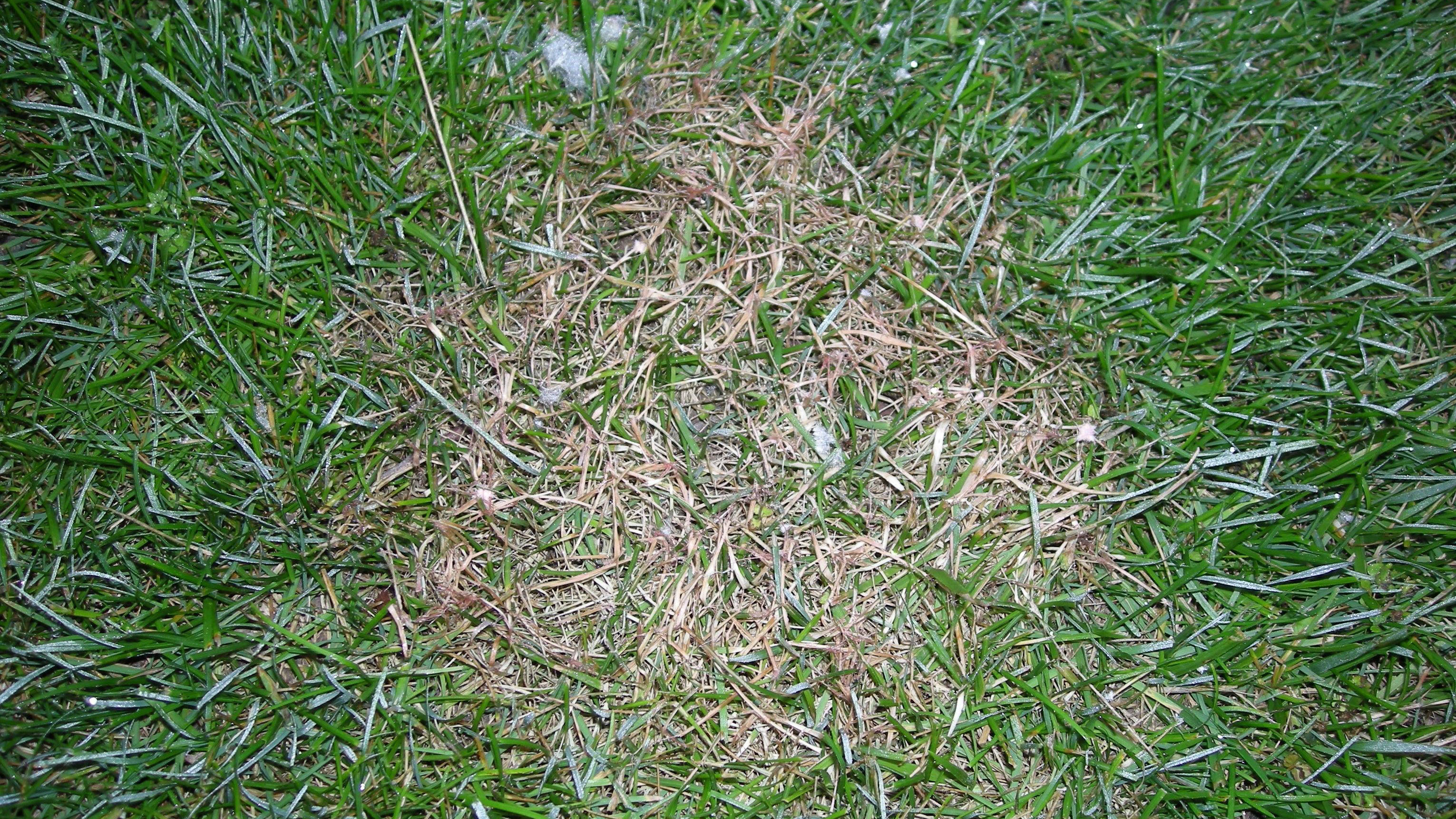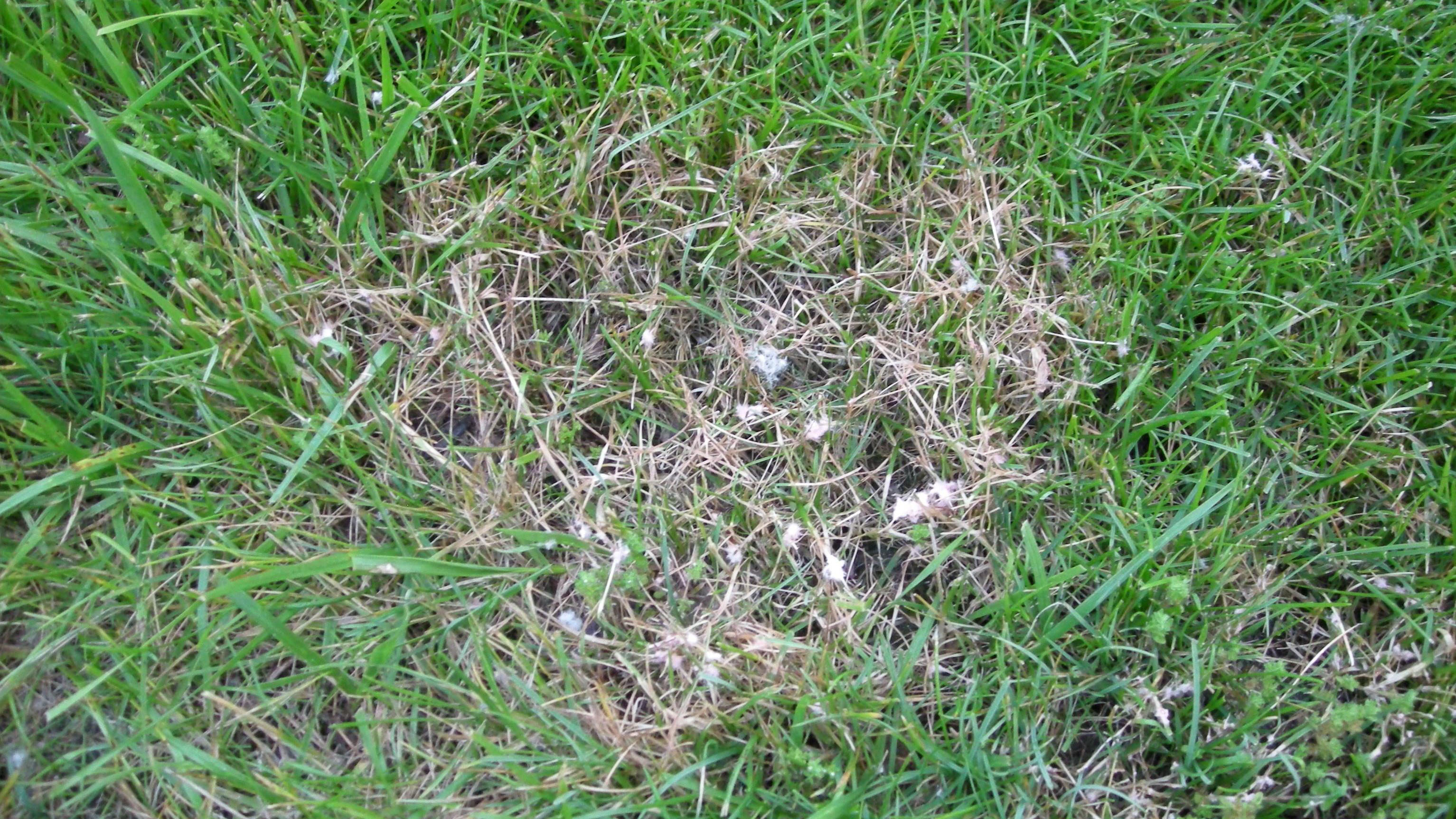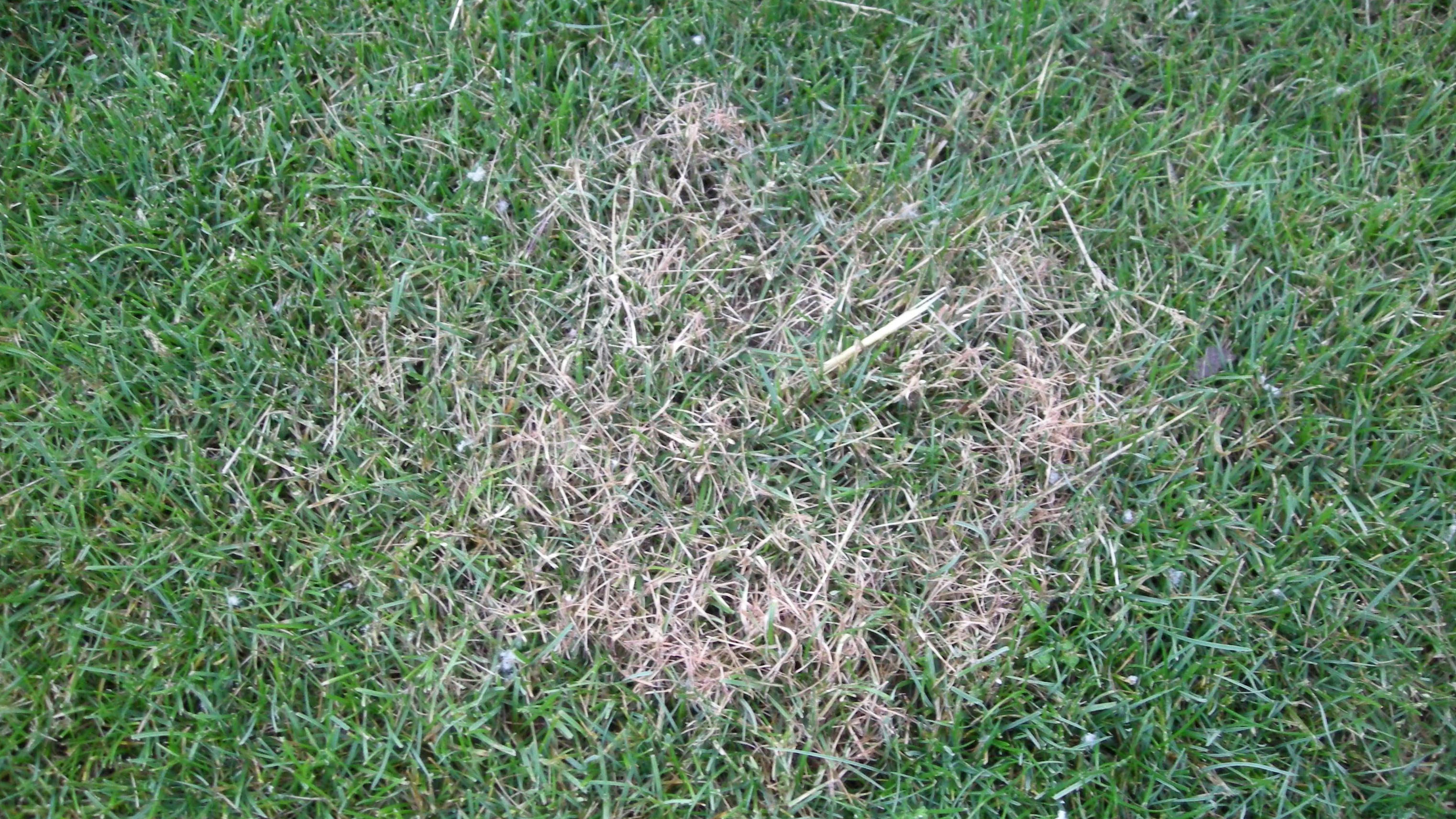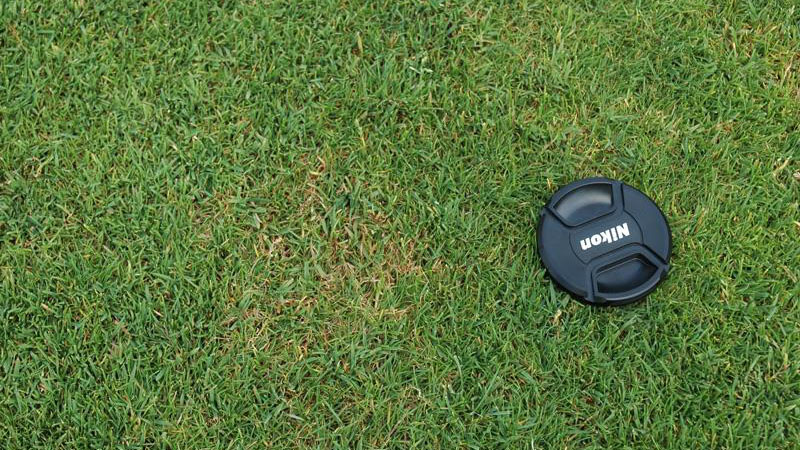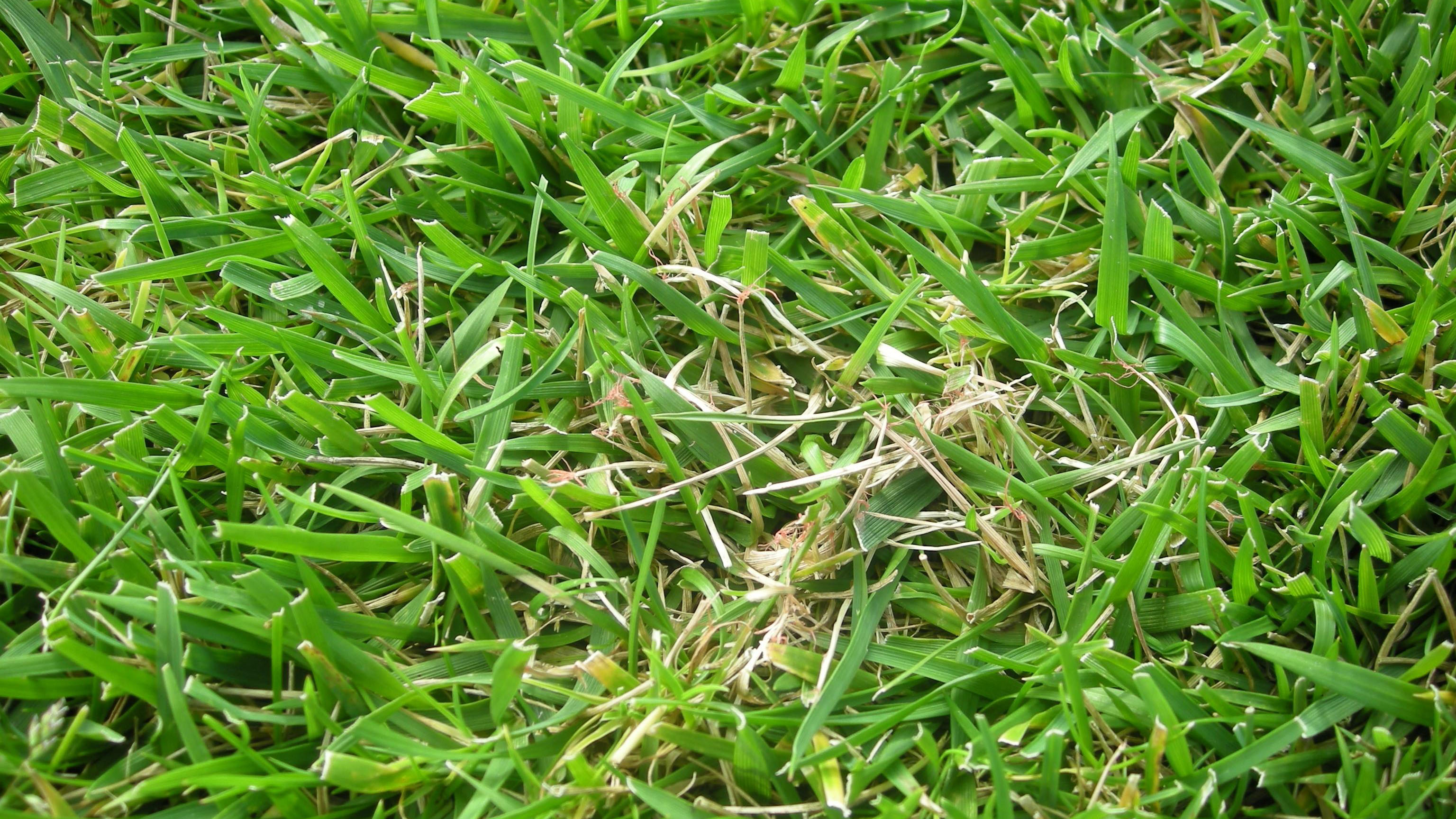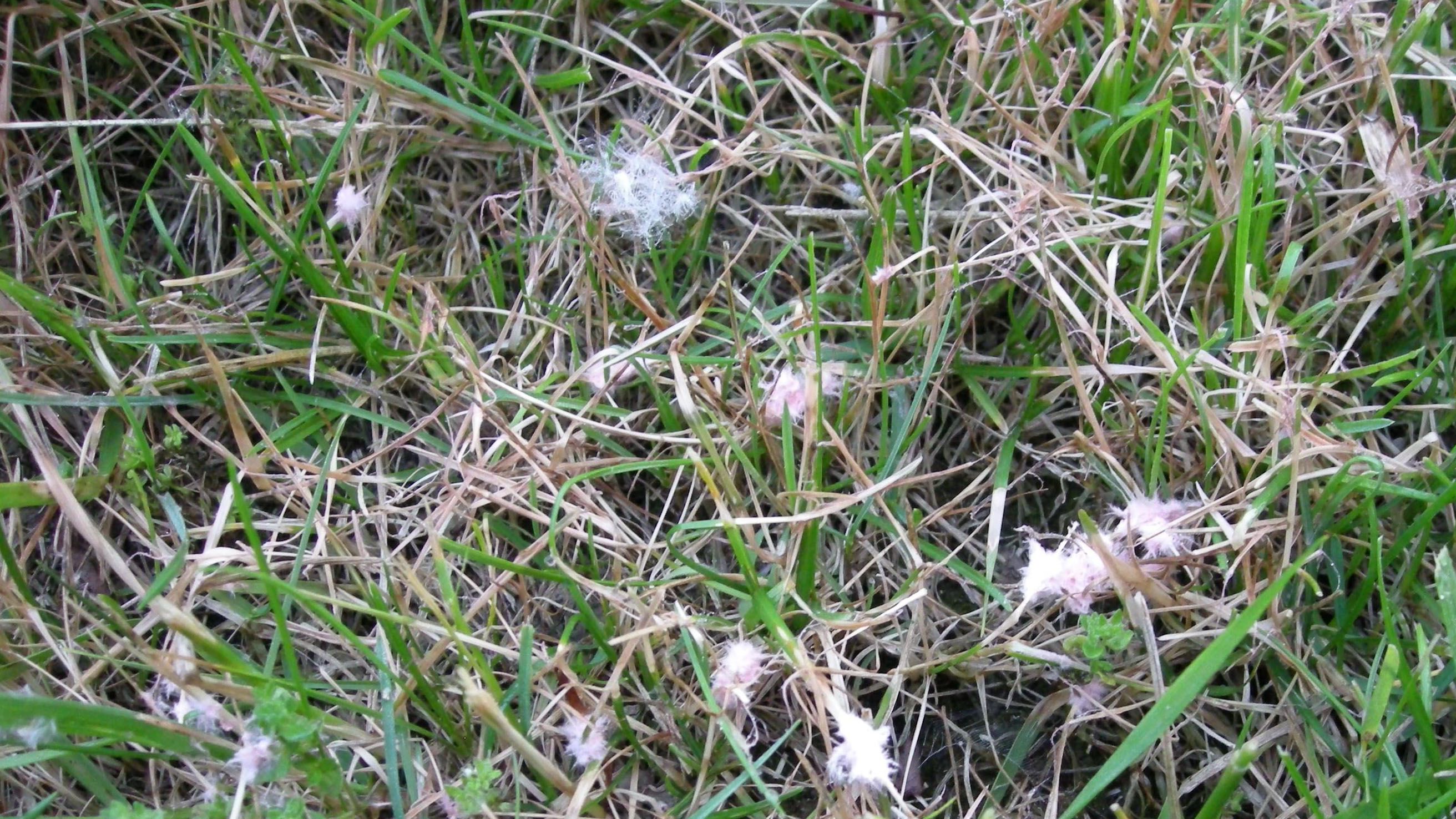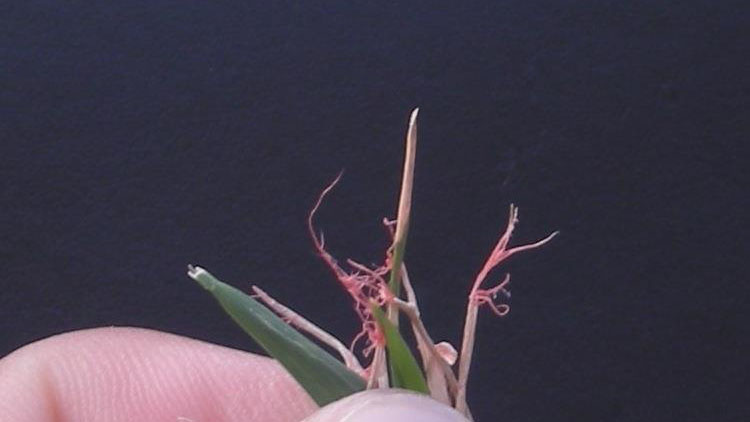Red Thread in Turf
en Español / em Português
El inglés es el idioma de control de esta página. En la medida en que haya algún conflicto entre la traducción al inglés y la traducción, el inglés prevalece.
Al hacer clic en el enlace de traducción se activa un servicio de traducción gratuito para convertir la página al español. Al igual que con cualquier traducción por Internet, la conversión no es sensible al contexto y puede que no traduzca el texto en su significado original. NC State Extension no garantiza la exactitud del texto traducido. Por favor, tenga en cuenta que algunas aplicaciones y/o servicios pueden no funcionar como se espera cuando se traducen.
Português
Inglês é o idioma de controle desta página. Na medida que haja algum conflito entre o texto original em Inglês e a tradução, o Inglês prevalece.
Ao clicar no link de tradução, um serviço gratuito de tradução será ativado para converter a página para o Português. Como em qualquer tradução pela internet, a conversão não é sensivel ao contexto e pode não ocorrer a tradução para o significado orginal. O serviço de Extensão da Carolina do Norte (NC State Extension) não garante a exatidão do texto traduzido. Por favor, observe que algumas funções ou serviços podem não funcionar como esperado após a tradução.
English
English is the controlling language of this page. To the extent there is any conflict between the English text and the translation, English controls.
Clicking on the translation link activates a free translation service to convert the page to Spanish. As with any Internet translation, the conversion is not context-sensitive and may not translate the text to its original meaning. NC State Extension does not guarantee the accuracy of the translated text. Please note that some applications and/or services may not function as expected when translated.
Collapse ▲Symptoms
Red thread develops in circular or irregular patches from 4 inches to 2 feet in diameter. Affected leaves within these patches are tan or bleached-white in color. From a distance, the patches usually have a reddish appearance, due to the presence of thick, red strands of fungal growth emanating from the affected leaves. It is through production of these “red threads (sclerotia)” that the fungus spreads to healthy plants and survives unfavorable conditions. Small tufts of pink, fuzzy mycelium may also be present in or around the patches when the leaves are wet or humidity is high. After prolonged periods of disease development, the patches may merge to produce large irregularly shaped areas of damaged turf.
Development Factors
The red thread fungus is able to cause disease at temperatures ranging from 40 to 80°F, but develops most rapidly at approximately 70°F. Red thread affects grass that is growing slowly for any reason: inadequate fertilization, drought stress, cool weather, low light intensity, excessive traffic, or many other pest or environmental stresses.
Red thread is most severe in the spring and fall, when extended periods of cool, wet, and overcast weather slow growth of the turf and favor growth of the pathogen. Because of its wide temperature range, red thread can develop at any time of year when a slow-growing host and sufficient leaf wetness are available.
Cultural Control
Fertilize to meet the nutritional needs of the turf and maintain vigorous growth. Submit a soil sample for nutrient analysis regularly, and apply recommended amounts of phosphorus, potassium, and lime. Apply nitrogen based on university recommendations to prevent weak, thin turf; however, avoid overstimulation and the development of lush, succulent turf.
Irrigation should be performed between midnight and 6 AM to prevent prolonged periods of leaf wetness. Never irrigate in the late afternoon or early evening. Apply a sufficient amount of water to wet the entire root zone, then reapply when the turf first starts to show signs of drought stress. Prune or remove trees, shrubs, or other barriers to increase air movement and sunlight penetration. Remove clippings from affected areas when the disease is active to reduce spread of the disease, and wash infected clippings from equipment before entering uninfected areas.
Chemical Control
Fungicides are available for control of red thread, but are usually not necessary if proper cultural practices are implemented.
* Products marked with an asterisk are not labeled for home lawn use.
| Fungicide and Formulation1 | Amount of Formulation2 | Application Interval (Days)3 | Efficacy Rating | Resistance Risk | FRAC Code4 |
|---|---|---|---|---|---|
| azoxystrobin (Heritage) WG TL G |
0.2 to 0.4 1 to 2 2 to 4 lbs |
14 to 28 14 to 28 14 to 28 |
++++ | Low | 11 |
| azoxystrobin + acibenzolar-S-methyl (Heritage Action)* | 0.2 to 0.4 | 14 to 28 | ++++ | Low | 11/P01 |
| azoxystrobin + chlorothalonil (Renown)* | 2.5 to 4.5 | 14 to 21 | ++++ | Low | 11/M5 |
| azoxystrobin + difenoconazole (Briskway)* | 0.5 to 1.2 | 14 to 28 | ++++ | Low | 11/3 |
| azoxystrobin + propiconazole (Headway) ME G |
1.5 to 3 2 to 4 lbs |
14 to 28 14 to 28 |
++++ | Low | 11/3 |
| azoxystrobin + propiconazole (Compendium) | 1.3 to 2.6 | 14 to 28 | ++++ | Low | 11/3 |
| azoxystrobin + tebuconazole (Strobe T)* | 0.75 to 1.5 | 14 to 21 | ++++ | Low | 11/3 |
|
benzovindiflupyr + difenoconazole (Ascernity)* |
1.0 | 14 | ++++ | Low | 7/3 |
|
boscalid + chlorothalonil (Encartis)* |
3 to 4 | 14 | +++ | Low | 7/M5 |
| chlorothalonil (Daconil Ultrex)* | 1.8 to 3.25 3.25 to 5.03 |
7 to 10 14 |
+++ | Low | M5 |
| chlorothalonil (Daconil Weather Stik)* | 2 to 3.6 3.6 to 5.5 |
7 to 10 14 |
+++ | Low | M5 |
| chlorothalonil (Daconil Zn)* | 3 to 5 5.3 to 8 |
7 to 10 14 |
+++ | Low | M5 |
| chlorothalonil + acibenzolar-S-methyl (Daconil Action)* | 2 to 3.5 3.6 to 5.4 |
7 to 10 14 |
+++ | Low | M5/P01 |
| chlorothalonil + fluoxastrobin (Fame C)* | 3 to 5.9 | 14 to 28 | ++++ | Low | M5/11 |
| chlorothalonil + iprodione + thiophanate-methyl + tebuconazole (Enclave)* | 3 to 4 7 to 8 |
14 to 21 28 |
+++ | Low | M5/2/1/3 |
| chlorothalonil + propiconazole (Concert)* | 3 to 5.5 5.5 to 8.3 |
14 14 to 21 |
+++ | Low | M5/3 |
| chlorothalonil + propiconazole + fludioxonil (Instrata)* | 2.75 to 6 | 14 to 21 | +++ | Low | M5/3/12 |
| chlorothalonil + thiophanate-methyl (Spectro)* | 3.72 to 5.76 | 7 to 14 | +++ | Low | M5/1 |
|
cyazofamid + azoxystrobin (Union) |
2.9 to 5.75 | 14 to 28 | ++++ | Low | 21/11 |
| fluoxastrobin (Fame) | 0.18 to 0.36 | 14 to 28 | ++++ | Low | 11 |
| fluoxastrobin + tebuconazole (Fame T)* | 0.45 to 0.9 | 21 to 28 | ++++ | Low | 11/3 |
| flutolanil (Prostar) (Pedigree) |
1.5 2.2 |
21 to 28 21 to 28 |
++++ ++++ |
Low | 7 |
| iprodione (26GT)* | 4 | 14 | ++++ | Low | 2 |
| iprodione + thiophanate-methyl (26/36)* | 1 to 4 | 14 to 21 | ++++ | Low | 2/1 |
| iprodione + trifloxystrobin (Interface Stressgard)* | 3 to 4 | 14 | +++ | Low | 2/11 |
| myclobutanil (Eagle) | 1.2 | 14 to 21 | ++ | Low | 3 |
| penthiopyrad (Velista) | 0.3 to 0.5 | 14 | ? | ? | 7 |
| polyoxin D (Affirm) (Endorse) |
0.88 4 |
7 to 14 7 to 14 |
? | Low | 19 |
| propiconazole (Banner MAXX II) | 2 | 14 to 21 | +++ | Low | 3 |
|
pydiflumetofen + azoxystrobin + propiconazole (Posterity XT)* |
1.5 to 3 | 14 to 28 | ++++ | Low | 7/11/3 |
| pyraclostrobin (Insignia) WG SC |
0.5 to 0.9 0.4 to 0.7 |
14 to 28 14 to 28 |
++++ | Low | 11 |
| pyraclostrobin + boscalid (Honor)* | 0.55 to 1.1 | 14 to 28 | ++++ | Low | 11/7 |
| pyraclostrobin + fluxapyroxad (Lexicon Intrinsic) | 0.34 to 0.47 | 14 to 28 | ++++ | Low | 11/7 |
| thiophanate-methyl (3336) (3336 Plus) (3336 G) |
2 to 4 2 to 4 1.5 to 6 lbs |
14 14 to 28 14 |
+ | Low | 1 |
| triadimefon (Bayleton) | 0.5 to 1 | 15 to 30 | ++ | Low | 3 |
| trifloxystrobin (Compass) | 0.1 to 0.15 0.2 to 0.25 |
14 21 |
++ | Low | 11 |
| trifloxystrobin + triadimefon (Armada) (Tartan)* |
0.6 to 1.5 1 to 2 |
14 to 28 14 to 28 |
+++ | Low | 11/3 |
| triticonazole (Trinity) (Triton) |
0.5 to 1 0.41 to 1.1 |
14 to 28 14 to 28 |
+++ | Low | 3 |
| triticonazole + chlorothalonil (Reserve)* | 3.2 to 4.5 | refer to label | +++ | Low | 3/M5 |
1Other trade names with the same active ingredients are labeled for use on turfgrasses and can be used according to label directions.
2Units are oz, fl oz, or lb depending on formulation. Apply fungicides in 2 to 5 gallons of water per 1,000 square feet according to label directions. Use lower rates for preventive and higher rates for curative applications.
3Use shorter intervals when conditions are very favorable for disease.
4Fungicide Resistance Action Committee code. Products with same code have the same mode of action and are in the same chemical class.
* Products marked with an asterisk are not labeled for home lawn use.
Efficacy Rating
++++ = excellent control when conditions are highly favorable for disease development
+++ = good control when disease pressure is high, excellent control when disease pressure is moderate
++ = good control when disease pressure is moderate, excellent control when disease pressure is low
+ = good control when disease pressure is low
? = not rated due to insufficient data
Resistance Risk
Low = Rotate to different chemical class after 3-4 applications; tank mixing not necessary
Medium = Rotate to different chemical class after 1-2 applications; tank-mixing with low or medium risk product recommended
High = Rotate to different chemical class after EVERY application; tank-mix with low or medium risk product for EVERY application
? = not rated due to insufficient data
Species Data
- HOST SPECIES
- Kentucky bluegrass, tall fescue, fine fescue, perennial ryegrass
- MONTHS WITH SYMPTOMS
- March to June, September to December
- STAND SYMPTOMS
- FOLIAR SYMPTOMS LOCATION / SHAPE
- dieback from leaf tip, blighting of entire leaves
- FOLIAR SYMPTOMS COLOR
- red, pink, tan
Figure 15
- red, pink, tan
- ROOT / CROWN SYMPTOMS
- none
- FUNGAL SIGNS
- thread-like sclerotia



